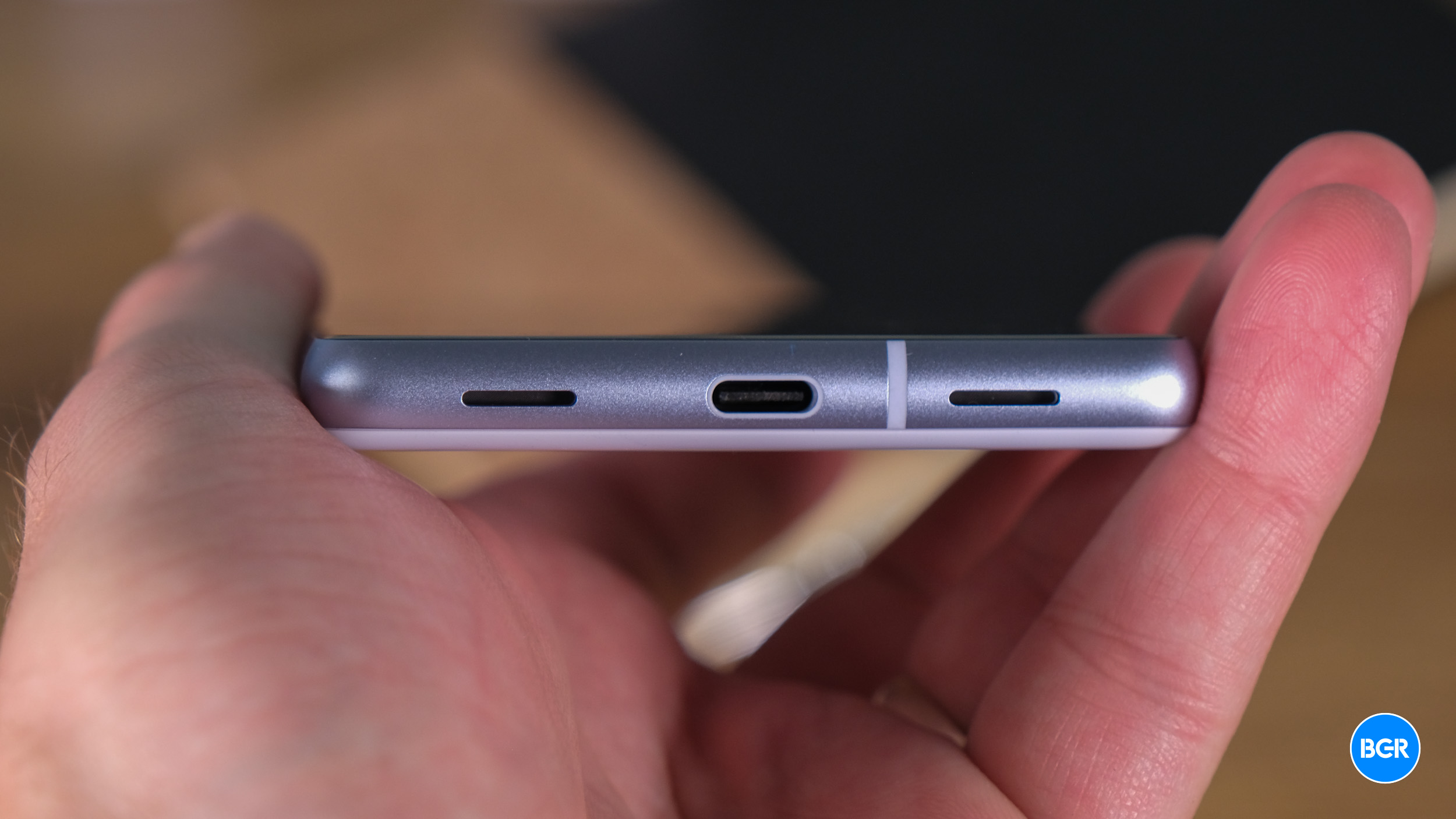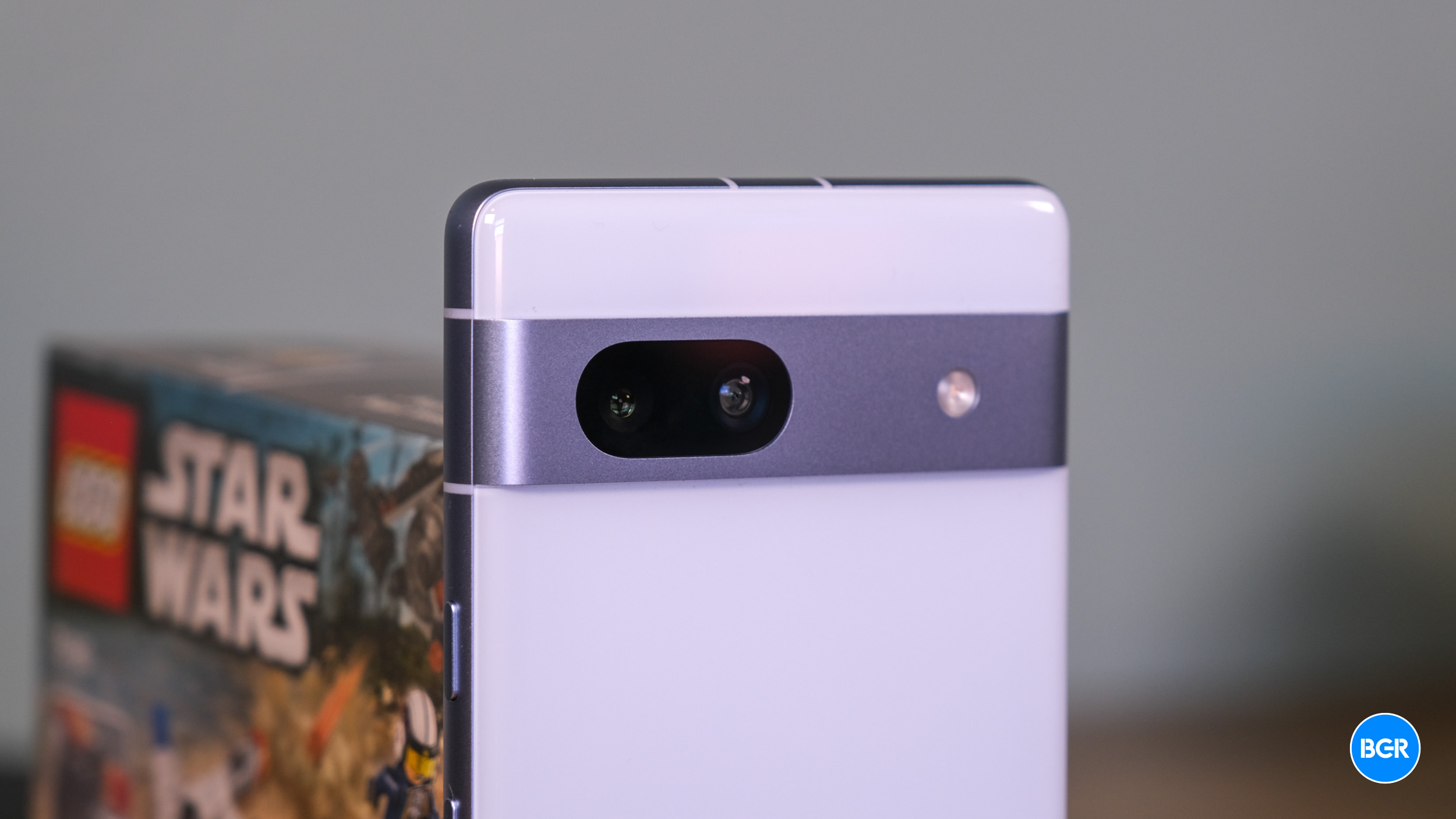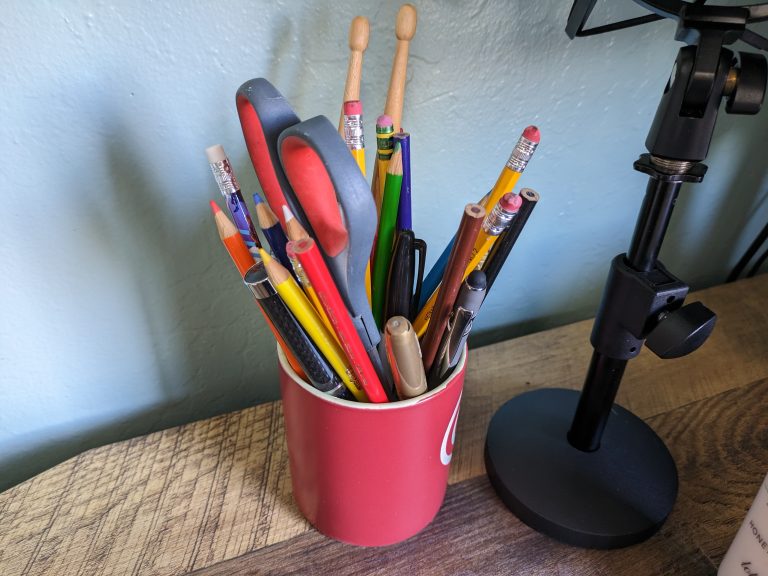Pixel 7a
The Google Pixel 7a may be the most expensive “budget” Pixel phone, but it also gets a series of improvements that make it the best choice in its price range.
Pros
- Solid design
- Good performance
- Great camera
- Upgraded display
- Wireless charging
Cons
- No telephoto camera
- Price increase
| Buy From | List Price | Sale Price | |
|---|---|---|---|
| $499 | $499 | See It |
The lower-cost Pixel A phones have always been arguably more interesting than their flagship counterparts, thanks to their offering of great performance and incredible camera features at a much lower price. The Pixel 6a was a great example of that, coming out swinging after a seemingly off year in the Pixel 5a. But now the all-new Pixel 7a is here, and it itself has challenges ahead of it. That’s thanks to the slightly higher price that arguably pushes the phone from “budget” to “midrange.”
Of course, the Pixel 7a also offers more than ever. It gets improvements in the display, camera, charging, and more, solving any major issues that one could have had with the Pixel 6a. Considering this, the extra $50 seems like a small price to pay.
But at $499, the Pixel 7a faces stiff competition. How does it perform? I’ve been using the phone to find out.
Google Pixel 7a design
Perhaps the only area where the Pixel 7a isn’t radically improved is the design. It basically looks the same as the previous-generation Pixel 6a.
Now, for some, that’s a bad thing — and I can see why. The huge camera bar across the back and the somewhat plasticky look do take some getting used to.

But I’m used to it, and I’m at the point of quite liking it. Phones are starting to offer more colors, but the two-tone color scheme still offers a welcome look in a world dominated by black-and-gray options. Of course, you could still get a Charcoal or a Snow model — but with Sea and Coral options, it’s hard to imagine why you would. The Pixel 7a we reviewed is dressed in the Sea colorway, and it looks great.
Apart from that, the only real difference in design is the fact that the camera bar is slightly lower on the back of the phone. You’ll still get the display with the hole-punch cutout in the middle, the USB-C port on the bottom, and the volume rocker and power buttons on the right-hand side.

This isn’t all that surprising. The design language of modern Pixel phones is only around a year and a half old. I wouldn’t be surprised if Google were to hold onto the design until the Pixel 9.
The build quality isn’t bad either. It’s perhaps not quite as premium-feeling as some flagship phones out there, but it certainly doesn’t feel bad, and while you’ll likely want to use it in a case, it should be able to withstand most day-to-day bumps.
Google Pixel 7a display
The display is where things start to improve a little. The display on the Pixel 6a was fine, with a 1080p resolution and a 60Hz refresh rate. The Pixel 7a steps things up. It keeps the same resolution but steps up the refresh rate to 90Hz.

That makes a significant impact on the overall feel of the screen. The jump from 60Hz to 90Hz feels much more significant than that from 90Hz to 120Hz. That’s not to say that an even higher refresh rate wouldn’t be welcome — just that the Pixel 7a certainly feels a whole lot better than the phone before it.
Generally, for a phone in the $500 price range, the display on the Pixel 7a is quite good. And, it gets bright enough too — even in direct sunlight the screen was legible.
Google Pixel 7a performance
Google’s shift to designing its own chips means that it can use those relatively high-end chips in even its lower-cost phones. As such, the Pixel 7a gets the Tensor G2, which is the same chip found in the much more expensive Pixel 7 and Pixel 7 Pro.
It shows in the performance. This phone will easily handle any and all day-to-day tasks that you can throw at it, including heavier multitasking and mobile gaming.
Sure, The Tensor G2 isn’t necessarily as high-performance as the likes of the Qualcomm Snapdragon 8 Gen 2 or the Apple A16 Bionic, but those are the best of the best — and the tighter first-party integration and scaled-back software means that Google could still deliver a great experience for a long time to come — though of course that does still remain to be seen given how early Google is in its chipset journey.
Google Pixel 7a battery and charging
The Pixel 7a comes with a 4,385mAh battery, and I found that while the battery is a little smaller than some of the competition, the phone was easily able to get through a day of use, and even partially into the next day. For most, it certainly won’t be able to get through two days of use, but if you’re good at keeping your phone charged up, it’ll easily do the trick.

New for the Pixel 7a, finally, is support for wireless charging. This is a feature that has long eluded Google’s cheaper Pixel phones, and I’m super glad to see it finally come with the Pixel 7a, even if the 7a is a little more expensive than Pixel A phones before it.
Using wireless charging, the phone can charge at 7.5W, while with wired charging, it can charge at 18W. That’s not all that fast, so it won’t get you very far if you need to charge quickly in a pinch.
Google Pixel 7a camera
On the back, the Pixel 7a keeps a dual camera setup, made up of one 64-megapixel Quad Bayer main camera and one 13-megapixel ultrawide camera.

Generally, however, images are a little more detailed and crisp than the Pixel 6a, and in well-lit environments, in classic Pixel fashion, the phone was able to capture very high-quality photos in a variety of environments. In well-lit situations, the phone captured bright and vibrant images that looked as good as those captured on the more expensive Pixel 7 and Pixel 7 Pro. Presumably, that’s because Google is using the same processing magic on the Pixel 7a as it does on those more expensive devices.
The same is true in poorly-lit situations. While in some low-light situations, there is some blur, the phone was able to brighten images and offer a good level of detail. Again, I noticed no real difference between most images captured with the Pixel 7a compared with photos I captured with the Pixel 7 Pro.
Of course, that does start to fall apart a little in some situations. For example, the Pixel 7 Pro has a telephoto camera — which the Pixel 7a doesn’t have. That means that once you start to zoom past 2x or 3x, you’ll start to notice a loss of detail — and you can forget about good-looking low-light photos. Thankfully, Google does somewhat fix some of the effects of digital zoom with its Super Res Zoom tech, which basically leverages machine learning to sharpen up zoomed images. But as you start to zoom more and more, images will look less like a photo and more like a painting, and you can’t zoom past 10x.
Still, generally speaking, I found the camera to be quite versatile for a phone without a telephoto camera. I don’t really zoom past 3x in my day-to-day life anyway and found that most images were acceptable at this level. Overall, the Pixel 7a is very competent in the camera department, for a phone in this price range.
Google Pixel 7a software
One of the biggest reasons many people buy a Pixel is the software experience, and safe to say, the experience on the Pixel 7a is the same as on any other modern Pixel phone — which is a good thing.
At this point, it’s a bit of a misnomer to call the Pixel software experience “stock Android.” Stock Android is closer to what you’ll find on a device from Motorola, for example. It’s bare-bones, and close to what Google ships to manufacturers. On top of that, however, the company builds extra features and customizations to create the overall Pixel look and feel, and as a whole, I’ve found those changes to be helpful.

Many of them, of course, are simply visual — but the visual changes run deep. The so-called Material You is a perfect example of this — changing many aspects of the interface to match your wallpaper, including app icons, menu items, and so on. It’s a neat idea, and for the most part, works well.
There are other features that make the Pixel user interface more helpful. For example, Google’s recorder app is excellent, and it can now label different speakers. Other things, like the “Direct My Call” feature that labels phone menu options before they’re even spoken, are extremely helpful and help to set the Pixel apart from the competition.
Google is promising five years of security updates, along with three years of operating system updates. I hope Google expands on the OS updates to be more in line with the five years or so that iPhones get, but three years is about on par with the rest of the Android world.
Conclusions
The Pixel 7a is an excellent addition to the Pixel lineup. Cheaper Pixel phones are still getting more expensive, but I think the new features justify the price increase. I still hope that Google is thinking about even cheaper Pixel phones, in the $300-$350 price range that the original Pixel A phones were sold at. But, if you’re looking for a great Android phone and have $499 to spend, the Pixel 7a is the way to go.
The competition
If you’re open to different operating systems, the 2022 iPhone SE is a solid choice — though the device feels a little dated, considering its older design and single camera. Apple needs to make changes to the SE for the next update in order to keep up.
In the Android world, the Samsung Galaxy A54 is another compelling choice, with a higher refresh-rate display and a triple-camera setup, though there’s still no telephoto camera, so it’s not necessarily much more versatile.
Ultimately, in the $500-and-under price range, the Pixel 7a is the best option right now.
Should you buy the Google Pixel 7a?
Yes. If you have $499 to spend, the Pixel 7a is the way to go.















